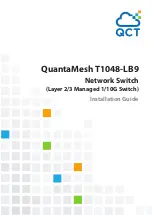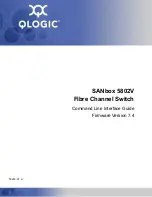
Operation Manual – Multicast
H3C S3100 Series Ethernet Switches
Chapter 1 Multicast Overview
1-12
and Layer 3 multicast devices, thus effectively controlling the flooding of multicast data
in a Layer 2 network.
1.4 Multicast Packet Forwarding Mechanism
In a multicast model, a multicast source sends information to the host group identified
by the multicast group address in the destination address field of the IP packets.
Therefore, to deliver multicast packets to receivers located in different parts of the
network, multicast routers on the forwarding path usually need to forward multicast
packets received on one incoming interface to multiple outgoing interfaces. Compared
with a unicast model, a multicast model is more complex in the following aspects.
z
In the network, multicast packet transmission is based on the guidance of the
multicast forwarding table derived from the unicast routing table or the multicast
routing table specially provided for multicast.
z
To process the same multicast information from different peers received on
different interfaces of the same device, every multicast packet is subject to a
reverse path forwarding (RPF) check on the incoming interface. The result of the
RPF check determines whether the packet will be forwarded or discarded. The
RPF check mechanism is the basis for most multicast routing protocols to
implement multicast forwarding.
The RPF mechanism enables multicast devices to forward multicast packets correctly
based on the multicast route configuration. In addition, the RPF mechanism also helps
avoid data loops caused by various reasons.
1.4.1 Implementation of the RPF Mechanism
Upon receiving a multicast packet that a multicast source S sends to a multicast group
G, the multicast device first searches its multicast forwarding table:
1) If the corresponding (S, G) entry exists, and the interface on which the packet
actually arrived is the incoming interface in the multicast forwarding table, the
router forwards the packet to all the outgoing interfaces.
2) If the corresponding (S, G) entry exists, but the interface on which the packet
actually arrived is not the incoming interface in the multicast forwarding table, the
multicast packet is subject to an RPF check.
z
If the result of the RPF check shows that the RPF interface is the incoming
interface of the existing (S, G) entry, this means that the (S, G) entry is correct but
the packet arrived from a wrong path and is to be discarded.
z
If the result of the RPF check shows that the RPF interface is not the incoming
interface of the existing (S, G) entry, this means that the (S, G) entry is no longer
valid. The router replaces the incoming interface of the (S, G) entry with the
interface on which the packet actually arrived and forwards the packet to all the
outgoing interfaces.
















































